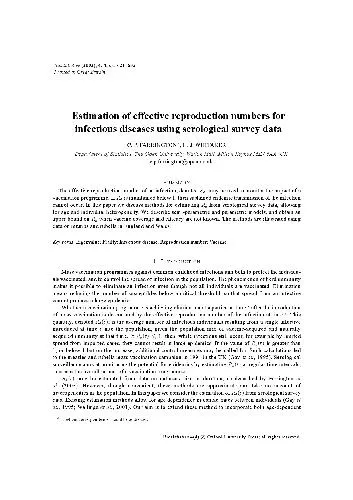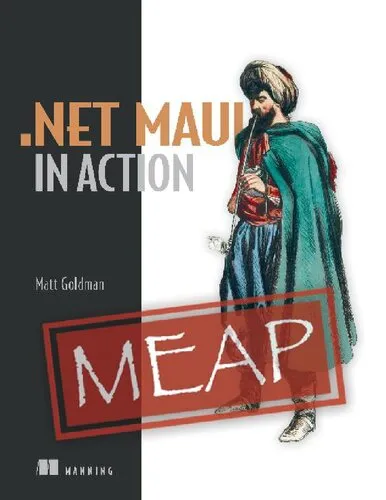Estimation of effective reproduction numbers for infectious diseases using serological survey data
4.3
Reviews from our users

You Can Ask your questions from this book's AI after Login
Each download or ask from book AI costs 2 points. To earn more free points, please visit the Points Guide Page and complete some valuable actions.Related Refrences:
Welcome to the detailed exploration of 'Estimation of Effective Reproduction Numbers for Infectious Diseases Using Serological Survey Data,' an essential resource that navigates the complexities of epidemiological modeling and the estimation of effective reproduction numbers (R) through the lens of serological data. In an era where infectious diseases and pandemics have captured global attention, understanding how these diseases spread and recur becomes paramount. With this book, authors Farrington C.P. and Whitaker H.G. delve into advanced methods and provide a robust framework for epidemiologists, public health experts, and researchers seeking to grasp the dynamics of infectious disease transmission.
Detailed Summary of the Book
The core of this book revolves around the critical epidemiological parameter known as the effective reproduction number (R), which plays a pivotal role in comprehending the rate at which an infectious disease spreads within a population. Typically, R is the average number of secondary infections produced by a single infectious individual in a completely susceptible population. Estimating this number accurately, especially in the context of varying immunity levels due to past infections or vaccinations, is crucial for designing effective control measures and response strategies.
'Estimation of Effective Reproduction Numbers for Infectious Diseases Using Serological Survey Data' addresses the gap in the traditional approaches by incorporating serological data—data obtained from blood tests that measure the presence of antibodies indicative of past exposure to infectious agents. This book provides holistic insights into how serological surveys can inform and refine our understanding of R, accounting for both the susceptible fraction of the population and the rate of contact between individuals.
Structured over several chapters, the book covers essential methodologies, starting from the foundational basics of infectious disease modeling, moving into complex statistical techniques required for proper estimation. Key topics include the interpretation of serology tests, design and implementation of serological surveys, statistical methods for data integration, and case studies from real-world scenarios where serological data has been pivotal in controlling disease spread.
Key Takeaways
- Understanding the importance of using serological data to enhance the accuracy of reproduction number estimates.
- Insight into real-world applications through case studies, demonstrating the practical implications of theory.
- A comprehensive overview of statistical methods involved in the estimation of epidemiological parameters.
- Guidelines for implementing and interpreting serological surveys effectively within public health frameworks.
Famous Quotes from the Book
"In the fluctuating landscape of infectious disease epidemiology, serological data serve as beacons, guiding accurate estimation of transmission dynamics."
"Effective reproduction numbers are more than just figures; they are reflections of underlying societal behaviors and immune protections."
Why This Book Matters
In the field of epidemiology and public health, accurate data and timely intervention are the keys to mitigating the impact of infectious diseases. This book is significant because it bridges a crucial gap between theoretical epidemiology and applied public health, providing a methodological backbone that is indispensable for academics, researchers, and policymakers. Especially in light of recent global health crises, this resource offers the tools and insights needed to enhance preparedness and response strategies, emphasizing the evolution of science to direct public health actions effectively.
The authors bring their extensive expertise, presenting complex statistical and epidemiological concepts in an accessible manner—inviting a broader audience to understand and utilize serological data effectively. As health landscapes continue to evolve, integrating novel methodologies with traditional models, such as proposed in this book, will prove to be pivotal in the fight against future pandemics.
Free Direct Download
You Can Download this book after Login
Accessing books through legal platforms and public libraries not only supports the rights of authors and publishers but also contributes to the sustainability of reading culture. Before downloading, please take a moment to consider these options.
Find this book on other platforms:
WorldCat helps you find books in libraries worldwide.
See ratings, reviews, and discussions on Goodreads.
Find and buy rare or used books on AbeBooks.
1366
بازدید4.3
امتیاز0
نظر98%
رضایتReviews:
4.3
Based on 0 users review
Questions & Answers
Ask questions about this book or help others by answering
No questions yet. Be the first to ask!








